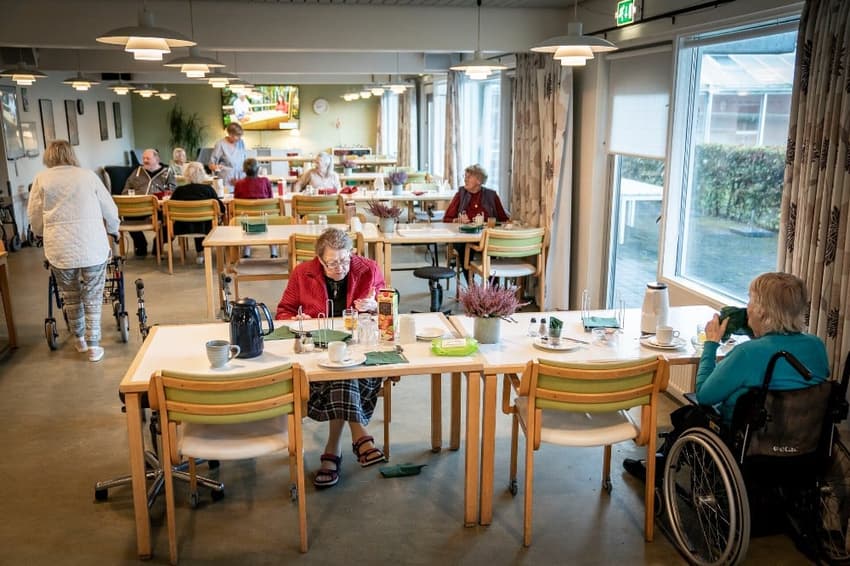What is Danish government’s plan for elderly care ‘saving model’?

A future model for elderly care in Denmark in which all people in Denmark pay into a savings fund has been mooted by the governing Social Democratic party.
The Social Democrats, the senior member of the coalition government, want to introduce a new contributions model to fund elderly care, political spokesperson Christian Rabjerg Madsen said in an interview with newspaper Jyllands-Posten.
Specifically, the model would mean everyone in Denmark being obliged to pay into a fund that would cover the cost of elderly care, regardless of they extent to which they or members of their family eventually need it.
The idea is to secure more contributions to healthcare from the public and reduce so-called “A and B teams”, meaning people whose relatives can afford private elderly care and those who can’t, Madsen said.
Madsen compared the concept to pension plans that provide the opportunity to supplement the regular state pension with additional funds.
READ ALSO: What foreign residents need to know about Denmark's pension rules
“We very much want to prioritise the elderly of the future and invest in elderly care. But we also need funds for green transition, invest in our military, fight poor welfare and a lot of other things,” he said to news wire Ritzau.
“With that in mind I think we have to accept that if we want to help elderly people without health insurance or private fortunes, we must make a savings arrangement,” he added.
In the Jyllands-Posten interview, the spokesperson said it was “difficult to say anything here and now” about which services would be covered by the savings model, but that wealthy and poorer homes alike would be expected to contribute.
He also recognised that the plan would mean Danish taxpayers would be contributing towards elderly care twice: through their taxes and through the savings model.
A simple tax raise is not a viable solution because it would not receive parliamentary support, he said.
But the plan would mean a “significant” improvement to elderly care standards in Denmark, he argued.
Left wing parties have expressed scepticism about the plan.
“I think this is quite shocking to hear from the Social Democrats. It’s a fundamental breakaway from the entire societal model we have built up, whereby a tax-funded social welfare model provides help to those who need it most,” said elderly issues spokesperson Peder Hvelpund of the Red Green Alliance.
The Socialist People’s Party (SF) also said elderly care should be financed by tax, despite the increased costs projected in coming years as the population ages.
“The best financing of elderly care is still tax,” SF’s spokesperson Kirsten Normann Andersen said.
“That’s what treats everyone most equally, and that’s what best provides for the same good treatment when we get older,” she said.
Comments
See Also
The Social Democrats, the senior member of the coalition government, want to introduce a new contributions model to fund elderly care, political spokesperson Christian Rabjerg Madsen said in an interview with newspaper Jyllands-Posten.
Specifically, the model would mean everyone in Denmark being obliged to pay into a fund that would cover the cost of elderly care, regardless of they extent to which they or members of their family eventually need it.
The idea is to secure more contributions to healthcare from the public and reduce so-called “A and B teams”, meaning people whose relatives can afford private elderly care and those who can’t, Madsen said.
Madsen compared the concept to pension plans that provide the opportunity to supplement the regular state pension with additional funds.
READ ALSO: What foreign residents need to know about Denmark's pension rules
“We very much want to prioritise the elderly of the future and invest in elderly care. But we also need funds for green transition, invest in our military, fight poor welfare and a lot of other things,” he said to news wire Ritzau.
“With that in mind I think we have to accept that if we want to help elderly people without health insurance or private fortunes, we must make a savings arrangement,” he added.
In the Jyllands-Posten interview, the spokesperson said it was “difficult to say anything here and now” about which services would be covered by the savings model, but that wealthy and poorer homes alike would be expected to contribute.
He also recognised that the plan would mean Danish taxpayers would be contributing towards elderly care twice: through their taxes and through the savings model.
A simple tax raise is not a viable solution because it would not receive parliamentary support, he said.
But the plan would mean a “significant” improvement to elderly care standards in Denmark, he argued.
Left wing parties have expressed scepticism about the plan.
“I think this is quite shocking to hear from the Social Democrats. It’s a fundamental breakaway from the entire societal model we have built up, whereby a tax-funded social welfare model provides help to those who need it most,” said elderly issues spokesperson Peder Hvelpund of the Red Green Alliance.
The Socialist People’s Party (SF) also said elderly care should be financed by tax, despite the increased costs projected in coming years as the population ages.
“The best financing of elderly care is still tax,” SF’s spokesperson Kirsten Normann Andersen said.
“That’s what treats everyone most equally, and that’s what best provides for the same good treatment when we get older,” she said.
Join the conversation in our comments section below. Share your own views and experience and if you have a question or suggestion for our journalists then email us at [email protected].
Please keep comments civil, constructive and on topic – and make sure to read our terms of use before getting involved.
Please log in here to leave a comment.